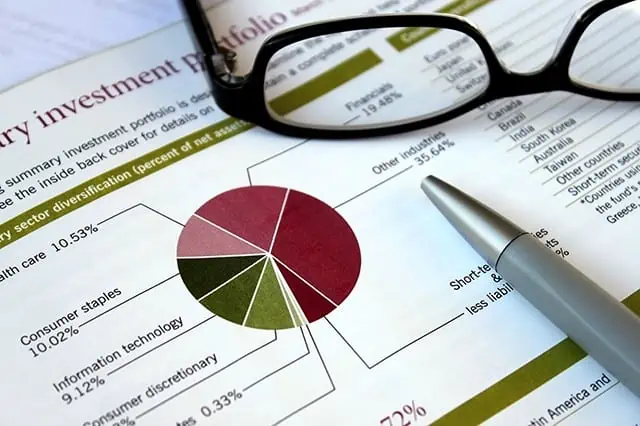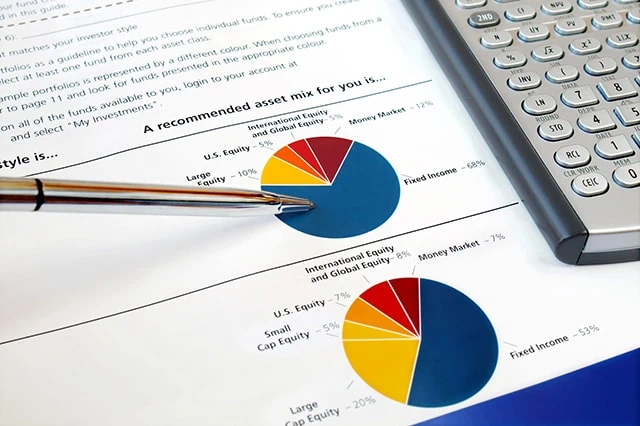Navigating the vast universe of mutual funds, from stocks and bonds to money markets, can feel daunting. The complexity deepens with the presence of multiple share classes within many funds, designed to meet the unique preferences of a diverse investor population.
“The best mutual fund for one investor might be very different than the best mutual fund for another,” explains Rachel Klinger, President of McCann Wealth Strategies, a registered investment adviser based in State College, Pennsylvania. “But there are certain things we tend to look for, including low costs, reasonable minimums and relative tax efficiency.”
The good news? Choosing the best mutual fund shares isn’t particularly difficult once you learn the vocabulary and consider your own objectives. The best option for a retiree might be a portfolio of income funds (funds that hold bonds and other debt), whereas a young investor just starting their career might be better served in equity mutual funds (funds that hold stocks).
Today, we’re going to help point you in the right direction. We’ll look at a variety of 2024’s best mutual funds for newbies—a group of funds with different purposes and strategies, covering most investors’ various needs. But before we get into any of that, we’ll cover a few basics about mutual funds to help newer investors get acclimated.
Disclaimer: This article does not constitute individualized investment advice. These funds appear for your consideration and not as personalized investment recommendations. Act at your own discretion.
Editor’s Note: The tabular data presented in this article is up-to-date as of August 31, 2024.
Table of Contents
What Is a Mutual Fund?

A mutual fund is an investment company that pools money from many investors to buy stocks, bonds or other securities. The investors get the benefits of professional management and certain economies of scale. A pool of potentially millions or even billions of dollars is large enough to diversify and might have access to investments that would be impractical for an individual investor to own.
Here’s an example: An investor wanting to mimic the S&P 500 Index (an index made up of 500 large, U.S.-listed companies) would generally have a hard time buying and managing a portfolio of 500 individual stocks, especially in the exact proportions of the S&P 500 Index. Another example: An investor wanting a diversified bond portfolio might have a hard time building one when individual bond issues can have minimum purchase sizes of thousands (or tens of thousands!) of dollars.
Equity funds or bond funds will generally be a far more practical solution.
How to Invest in a Mutual Fund

To invest in a mutual fund, you’ll need to open an account with the fund sponsor or open a brokerage account with a broker that has a selling agreement in place with the fund sponsor. As a general rule, most large, popular mutual funds will be available at most brokers, so if you open a traditional investment account (like an IRA or brokerage), you’ll have access to most of the mutual funds you’d ever want to invest in.
Actively Managed Funds vs. Index Funds

There are infinite types of mutual funds, but all can be divided into two main camps:
— actively managed funds
— passively managed funds, also known as passive funds or, most commonly, index funds
Actively managed funds have professional managers that use their discretion to buy and sell securities. Whether they are value funds, growth funds, or anything in between, they are all essentially run the same way: A manager or team of managers buys and sells stocks, bonds, or other securities in the pursuit of price returns, dividends/income, or both.
Related: The 7 Best Mutual Funds for Beginners
Index funds, in contrast, are passive. There’s no manager actively looking to “beat the market.” The fund is simply looking to copy an index—which is based on a set of rules that the index automatically applies—enjoying that underlying investment exposure. Actively managed stock funds will try to cherry pick the stocks or bonds they like best. An index fund simply buys whatever its rules say to buy, then lets that portfolio run until it’s time to “rebalance” (apply the rules again).
Related: 6 Best Stock Recommendation Services [Stock Tips + Picks]
The primary advantages of actively managed funds is that a talented manager can potentially outperform over time and may be adept at navigating a difficult period such as a bear market. But with an index fund, you generally get much lower costs in terms of management fees and trading expenses, better tax efficiency and performance that often ends up being better than that of many active managers.
The 7 Best Mutual Funds for Efficient Investors

With that as background, let’s take a look at some of the best mutual funds to consider as a beginning investor.
More than 7,000 mutual funds trade in the United States alone, which is actually greater than the number of stocks traded domestically.
This isn’t a comprehensive list—and it’s not meant to be. Instead, this is a sampling of some of the best options you have across most of the major mutual fund categories, so there’s at least one fund (and typically more) for every type of investor trying to build a starter portfolio.
Related: Best Vanguard Retirement Funds for a 401(k) Plan
1. Fidelity 500 Index Fund

— Assets under management: $585.4 billion
— Expense ratio: 0.015%, or 15¢ per year for every $1,000 invested
— Dividend yield: 1.2%
— Minimum initial investment: None
As a long-term wealth builder, it’s really hard to beat the S&P 500. And for a beginning investor, an investment in a simple S&P 500 Index fund like the Fidelity 500 Index Fund (FXAIX) is one of the absolute smartest moves you can make.
Related: The 10 Best Fidelity Funds to Buy
If you believe in the American growth story, then buying a basket of America’s biggest and most recognized companies only makes sense. Even Warren Buffett himself—considered by many to be the greatest investor in history—has said on multiple occasions that most investors most of the time should simply invest in an S&P 500 index fund and be done with it.
All true index funds are the same in that they all, by design, attempt to replicate the performance of the underlying index. So, when deciding among funds that track the very same index, choosing one over another really just comes down to cost and scale. You want the index fund with the cheapest fees. And ideally, you want the fund to be large and growing—index funds that are growing and adding assets tend to sell fewer positions to meet investor redemptions, thus generating less in potential capital gains taxes.
Fidelity index funds tend to sport low costs, and the Fidelity 500 Index Fund is no exception, with an almost nonexistent expense ratio of just 0.015%. That’s just about impossible to beat.
Turnover in S&P 500 index funds tends to be low at just a couple percent in any given year. That makes them an extraordinarily tax-efficient way to invest. So, if you find yourself with limited IRA or 401(k) funds available to invest, it makes sense to allocate your taxable dollars to a fund like FXAIX.
Related: Best Fidelity Retirement Funds for a 401(k) Plan
2. Fidelity Contrafund

— Assets under management: $145.9 billion
— Expense ratio: 0.55%, or $5.50 per year for every $1,000 invested
— Dividend yield: 0.4%
— Minimum initial investment: None
If you are new to investing in equity mutual funds, you are in good hands with Fidelity Contrafund (FCNTX) manager Will Danoff. He’s one of the most successful equity fund managers in history and has been running FCNTX for three decades, helping to build it into one of the largest mutual funds in the world.
Contrafund has a simple mandate—capital appreciation (in other words, price gains)—and the fund is anything if not flexible. It can pursue value stocks, growth stocks, or any combination of the two.
Given Contrafund’s size, it generally has to concentrate in large-cap stocks. Its biggest holding is Facebook parent Meta Platforms (META), which makes up nearly 13% of its portfolio. Warren Buffett’s Berkshire Hathaway (BRK.B), Microsoft (MSFT) and Amazon.com (AMZN) are also large positions at between 6% and 9% each.
Related: WealthUp’s Winningest Tech Stocks for 2024
In most years, Contrafund’s returns won’t deviate all that much from the S&P 500’s returns, and over the past decade, the fund’s annualized returns have been almost identical to the S&P 500. But in 2000, 2001 and 2002—a bear market that, similar to our most recent one, centered around technology and growth stocks—the S&P was down 9.0%, 11.9%, and 22.0%, respectively. Contrafund lost a good deal less over that three-year stretch at 6.8%, 12.6%, and 9.6%, respectively.
The fund struggled in 2022, but then, in a bear market, virtually all equity funds take damage. It’s the price we pay for getting access to the upside of a bull market. Remember: A skilled manager can really earn their keep during difficult markets by minimizing those losses while still positioning the portfolio to benefit when the market comes roaring back; indeed, Danoff managed to beat his category average in 2022, then did so again in 2023, posting 39% returns for the full year.
Also, note that FCNTX, like some other Fidelity mutual funds, has no minimum initial investment.
Related: 7 Best Fidelity ETFs for 2024 [Invest Tactically]
3. Vanguard High Dividend Yield Index Fund Admiral Shares

— Assets under management: $13.8 billion
— Expense ratio: 0.08%, or 80¢ per year for every $1,000 invested
— Dividend yield: 2.7%
— Minimum initial investment: $3,000 (No minimum in ETF version)
As 2022 made abundantly clear, we cannot always depend on stock price returns to materialize when we want or need them. However, dividends allow you to realize a steady stream of returns without having to sell your shares at potentially inopportune times.
Related: The 7 Best Dividend ETFs [Get Income + Diversify]
We have an article explaining the ins and outs of dividend stocks (that includes several great picks for beginners), but in short: Dividends are cash payments that some companies decide to distribute to shareholders. Many companies pay these dividends on a regular basis, so many investors buy them knowing they can expect a certain baseline of income each year. As another bonus, dividend-paying stocks tend to be more stable, mature and shareholder focused than their non-dividend-paying peers.
If you’re a beginner investor who’s interested in dividends, one of the best mutual funds for you is the Vanguard High Dividend Yield Index Fund Admiral Shares (VHYAX). This Vanguard index fund tracks the FTSE High Dividend Yield Index, which is made up of stocks that have a history of paying above-average dividends. For context, the S&P 500 yields 1.2%; VHYAX yields more than double that, at 2.7%.
As you might expect from a dividend-focused mutual fund, the Vanguard High Dividend Yield Index Fund has a high allocation to steady large-cap companies. Top holdings include the likes of JPMorgan Chase (JPM), Exxon Mobil (XOM), and Johnson & Johnson (JNJ). Together, the financial, consumer staples, and healthcare sectors make up almost half the portfolio. Meanwhile, technology—which dominates most growth indexes—makes up only about 8%. This makes VDIGX a solid diversification option for beginning investors looking to spread their risks.
Related: 12 Best Long-Term Stocks to Buy and Hold Forever
The one potential challenge for beginning investors is a $3,000 minimum initial investment, which is on the high side for a regular fund available to everyday investors. However, if this fund is available in your 401(k), that minimum shouldn’t apply. And if you only have a brokerage account through an investment app or an IRA to work with, you can get the same strategy in ETF form with the Vanguard High Dividend Yield ETF (VYM). At time of writing, a single share can be purchased for around $128.
4. Schwab International Index Fund

— Assets under management: $10.1 billion
— Expense ratio: 0.06%, or 60¢ per year for every $1,000 invested
— Dividend yield: 3.1%
— Minimum initial investment: None
America is the world’s major idea factory and wealth generator. It has been that way for over a century, and it’s unlikely to change any time soon. That said, the United States isn’t the only game in town. And while American stocks tend to beat most of their peers over time, there are long stretches in which international stocks tend to outperform.
So, beginning investors should consider mixing in an international mutual fund, such as the Schwab International Index Fund (SWISX).
Related: The 7 Best Closed-End Funds (CEFs) That Yield Up to 12%
SWISX is an index fund covering the world’s major developed international markets, primarily Europe and Japan. More than 63% of the portfolio is invested in European stocks, with Swiss food giant Nestlé (NSRGY) the single biggest position at around 2%.
Financials and industrials are the two biggest sector concentrations, at 19% and 16%, respectively. And importantly, technology makes up only 8% of the portfolio. This makes the fund a nice diversifier for an American market that tends to be heavy in tech stocks.
Schwab International Index Fund also happens to be one of the very cheapest options you’ll find, with an expense ratio of just 0.06%. And like with Fidelity, many Schwab mutual funds, including SWISX, have no minimum initial investment.
Related: Beginner’s Guide to Schwab Target-Date Funds
5. Schwab U.S. Aggregate Bond Index Fund

— Assets under management: $5.1 billion
— Expense ratio: 0.04%, or 40¢ per year for every $1,000 invested
— SEC yield: 3.8%*
— Minimum initial investment: None
Bonds—debt issued by governments, companies, and other entities that pay interest to bondholders—are often thought of as investments for stodgy older investors, but that’s not necessarily true. Younger and beginning investors can also benefit from diversification in bond funds, particularly when the market is volatile like it is today. Having bonds in your portfolio can both reduce overall volatility and pay you a steady stream of income.
The biggest single impediment for most investors looking to get access to bonds is portfolio size. Many bonds have minimum investments in the thousands or even tens of thousands of dollars. That’s a non-starter for a beginning investor that may be starting with as little as a couple hundred dollars. Furthermore, the universe of bonds is broad and complex, and it can be overwhelming to newcomers.
Related: 5 Best Vanguard Dividend Funds [Low-Cost Income]
For these reasons, investors looking to get exposure to fixed income should consider bond mutual funds such as the Schwab U.S. Aggregate Bond Index Fund (SWAGX).
This bond index fund gives the beginning investor extremely broad exposure to the U.S. bond market—as in, nearly 9,000 investment-grade-rated bonds! (Rating companies grade debt: some is considered “investment-grade,” while some is considered “non-investment-grade,” which is commonly referred to as “junk.”) SWAGX offers a competitive yield of 3.8% right now, it charges a meager 0.04% in annual expenses, and there’s no minimum initial investment to get started.
If you are looking for a one-stop shop for fixed income, the Schwab U.S. Aggregate Bond Index Fund is a solid option.
* SEC yield reflects the interest earned across the most recent 30-day period. This is a standard measure for funds holding bonds and preferred stocks.
Related: Best Schwab Retirement Funds for a 401(k) Plan
6. DoubleLine Total Return Bond Fund (DLTNX)

— Assets under management: $30.2 billion
— Expense ratio: 0.74%, or $7.40 per year for every $1,000 invested
— SEC yield: 5.6% (N share class)
— Minimum initial investment: $2,000, or $500 in an IRA
Just as stocks go through bull and bear markets, so do bonds. For this reason, it can be nice to have active management. An experienced bond fund manager can potentially navigate a difficult period of rising rates or, at a minimum, offer diversification to a core bond index fund.
One strong contender is the DoubleLine Total Return Bond Fund (DLTNX), run by the legendary Jeff Gundlach. Gundlach has never been a stranger to contrary opinions—today he believes that the biggest risk the Fed faces is that inflation falls too fast … and that is precisely what makes him attractive as an active manager. His eccentricity translates into returns that don’t simply move with the crowd. Since inception, the fund has returned about 3.3% per year vs. 2.1% for the Bloomberg US Aggregate Bond Index—a broad bond index that serves as the benchmark for many bond funds.
Related: 5 Best Money Market Funds [Protect Your Savings]
The DoubleLine Total Return Bond Fund invests primarily in mortgage securities, further making it a good diversifier to a standard bond portfolio. It yields a very competitive 5.6%.
DLTNX, at 0.74%, has a higher expense ratio than many of the funds on this list, but we should also remember that it is an actively managed fund run by one of the savviest investors on the planet. It also has a higher minimum investment than the other funds on this list ($2,000), but if you buy it within an IRA, the minimum drops to a pretty accessible $500.
Related: 13 Dividend Kings for Royally Resilient Income
7. Vanguard Target Retirement 2070 Fund

— Assets under management: $886.8 million
— Expense ratio: 0.08%, or 80¢ per year for every $1,000 invested
— SEC yield: 2.2%
— Minimum initial investment: $1,000
If you are new to investing, one of the absolute best mutual funds for beginners would be a “target-date fund” such as the Vanguard Target Retirement 2070 Fund (VSVNX).
Investing in mutual funds isn’t difficult, but it does require your attention. You should regularly check your allocation to make sure that the risk you’re taking is appropriate for your age and stage of life. You generally don’t want to be too heavy in stocks later in life, as you won’t have time to recover any potential losses. And you generally don’t want to be too heavy in bonds early in your career because you’re unlikely to keep pace with inflation.
Related: Beginner’s Guide to Vanguard Target-Date Funds
Ideally, you follow a “glidepath” from a more aggressive to a more conservative portfolio over the course of your investing life.
Related: Best Target Date Funds: Vanguard vs. Schwab vs. Fidelity
Well, a target-date fund does that for you, making it a particularly good option for beginners. Target-date funds build an allocation with a specific retirement date in mind, then adjust the asset allocation as we get closer to that date. A target-date fund with decades until the retirement date will generally be heavy in stocks, whereas a target-date fund very close to its retirement year will generally be a moderate balance of stocks and bonds. All you do is buy that one fund and hold it until (or sometimes even through) retirement—they do all the work of adjusting the portfolio in between!
Let’s say you’re 22 years old, fresh out of school, and looking to retire around the age of 70. You’d hit that age in the year 2070, which is why VSVNX would be appropriate. But let’s say you’re 42 instead. You’ll likely be retiring around the year 2050, so rather than buy VSVNX, you might instead opt for its sister fund, the Vanguard Target Retirement 2050 Fund (VFIFX).
Related: Beginner’s Guide to Fidelity Target-Date Funds
You don’t have to get the year exactly right here, as we don’t necessarily know decades ahead of time the precise day and time we intend to retire. Being within a three- to five-year window will generally get you close enough.
How Are Mutual Funds Different From Exchange-Traded Funds?

There is a lot of overlap between traditional mutual funds and their cousins, exchange-traded funds (ETFs). That’s because exchange-traded funds are very similar to mutual funds, but with a few different traits.
Related: The 24 Best ETFs to Buy for a Prosperous 2024
Like traditional mutual funds, an ETF will hold a basket of stocks, bonds, and other securities. These can be broad and tied to a major index like the S&P 500, or they can be exceptionally narrow and focus on a specific sector or even a specific trading strategy. For the most part, anything that can be held in an exchange traded fund can also be held in a mutual fund.
But there are some major differences. When you invest in a mutual fund, you (or your broker) actually send money to the manager, who in turn uses the cash to buy stocks or other investments. When you want to sell, the manager will sell off a tiny piece of the securities the mutual fund owns and send you the proceeds. Money generally enters or exits the fund once per day.
Related: Best Target Date Funds: Vanguard vs. Schwab vs. Fidelity
Exchange-traded funds, on the other hand, trade on the New York Stock Exchange or another major exchange like a stock. If you want to buy shares, you don’t send the manager money; you just buy shares from another investor on the open market.
There are two advantages here. The first is that ETFs allow for intraday liquidity. If you want to buy or sell in the middle of the trading day—or multiple times throughout the trading day—you can.
The second advantage is tax efficiency. In a traditional mutual fund, redemptions by investors can generate selling by the manager that creates taxable capital gains for the remaining investors who didn’t sell. This doesn’t happen with ETFs, as the manager isn’t forced to buy or sell anything when an investor sells their shares.
Related: The 9 Best ETFs for Beginners
Should I Invest in Money Market Funds?

As a general rule, no investor should ever have all of their funds invested in stock mutual funds and bond mutual funds. You will generally want to keep some portion of your portfolio liquid in something that is very low risk and easily convertible to cash. This is where money market mutual funds come in handy.
Money market funds are mutual funds that invest in very short-term investments, such as cash, U.S. Treasury or agency securities with extremely short-term to maturity, commercial paper, or floating-rate securities. While there can be credit risk to the extent the fund owns securities not guaranteed by the government, losses in money market funds are extremely rare.
If you are looking to earn a higher rate of interest on the idle cash in your bank or brokerage account while still maintaining liquidity, a money market fund will generally be a solid option. For most investors most of the time, a money market fund is going to give you the strongest combination of yield and liquidity.
What Are Balanced Mutual Funds?

Balanced mutual funds, sometimes also called “hybrid funds,” hold both stocks and bonds. However, while the name might imply that all balanced funds hold an equal amount of stocks and bonds, that’s not quite the case.
Some balanced funds are “aggressive” and dedicate far greater assets to stocks than bonds—say, 80/20 stocks, or 70/30 stocks. Meanwhile, some balanced funds are “conservative” and invest most of their assets in bonds. Still more are much closer to a 50/50 split.
Like Young and the Invested’s Content? Be sure to follow us.
Why Does a Fund’s Expense Ratio Matter So Much?

Every dollar you pay in expenses is a dollar that comes directly out of your returns. So, it is absolutely in your best interests to keep your expense ratios to an absolute minimum.
The expense ratio is the percentage of your investment lost each year to management fees, trading expenses and other fund expenses. Because index funds are passively managed and don’t have large staffs of portfolio managers and analysts to pay, they tend to have some of the lowest expense ratios of all mutual funds.
This matters because every dollar not lost to expenses is a dollar that is available to grow and compound. And over an investing lifetime, even a half a percent can have a huge impact. If you invest just $1,000 in a fund generating 5% per year after fees, over a 30-year horizon, it will grow to $4,116. However, if you invested $1,000 in the same fund, but it had an additional 50 basis points in fees (so it only generated 4.5% per year in returns), it would grow to only $3,584 over the same period.
Related: 6 Best Stock Recommendation Services [Stock Picking + Tips]

Stock recommendation services are popular shortcuts that help millions of investors make educated decisions without having to spend hours of time doing research. But just like, say, a driving shortcut, the quality of stock recommendations can vary widely—and who you’re willing to listen to largely boils down to track record and trust.
The natural question, then, is “Which services are worth a shot?” We explore some of the best (and best-known) stock recommendation services.
Related: 12 Best Long-Term Stocks to Buy and Hold Forever
As even novice investors probably know, funds—whether they’re mutual funds or exchange-traded funds (ETFs)—are the simplest and easiest ways to invest in the stock market. But the best long-term stocks also offer many investors a way to stay “invested” intellectually—by following companies they believe in. They also provide investors with the potential for outperformance.
So if your’e looking for a starting point for your own portfolio, look no further. Check out our list of the best long-term stocks for buy-and-hold investors.
Related: Best Target-Date Funds: Vanguard vs. Schwab vs. Fidelity

Looking to simplify your retirement investing? Target-date funds are a great way to pick one fund that aligns with when you plan to retire and then contribute to it for life. These are some of the best funds to own for retirement if you don’t want to make any investment decisions on a regular basis.
We provide an overview of how these funds work, who they’re best for, and then compare the offerings of three leading fund providers: Vanguard, Schwab, and Fidelity.
Related: 9 Best Monthly Dividend Stocks for Frequent, Regular Income

The vast majority of American dividend stocks pay regular, reliable payouts—and they do so at a more frequent clip (quarterly) than dividend stocks in most other countries (typically every six months or year).
Still, if you’ve ever thought to yourself, “it’d sure be nice to collect these dividends more often,” you don’t have to look far. While they’re not terribly common, American exchanges boast dozens of monthly dividend stocks.
Please Don’t Forget to Like, Follow and Comment

Did you find this article helpful? We’d love to hear your thoughts! Leave a comment with the box on the left-hand side of the screen and share your thoughts.
Also, do you want to stay up-to-date on our latest content? Follow us by clicking the [+ Follow] button above, subscribing to our weekly newsletter, The Weekend Tea, and giving the article a Thumbs Up on the top-left side of the screen.
And lastly, if you think this information would benefit your friends and family, don’t hesitate to share it with them!






